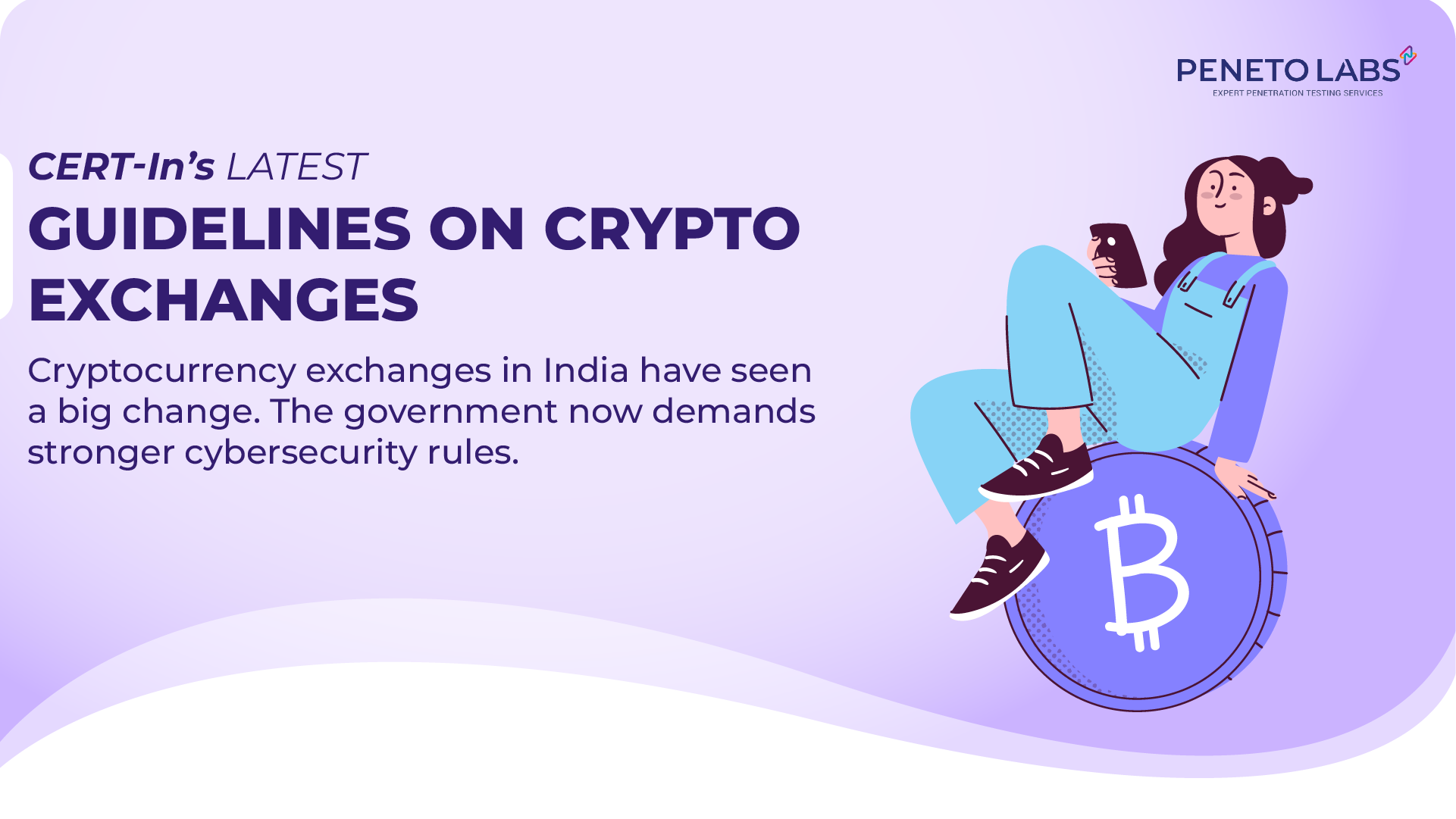Cryptocurrency exchanges in India have seen a big change. The government now demands stronger cybersecurity rules. These rules come from CERT-In as regulatory guidelines. They aim to protect user funds and build trust in the crypto space. Let’s learn more about them in this article.
Why Do These CERT-In Guidelines Matter Now?
- India has witnessed major hacks and cyber thefts at crypto platforms.
- Regulators see crypto exchanges as high-risk because they handle large flows of assets.
- Users demand more safety, transparency and proof that platforms can guard their funds.
- India’s laws like PMLA (Prevention of Money Laundering Act) now explicitly include crypto service providers.
What Does the New CERT-In Guidelines on Cryto Exchanges Require?
CERT-In, via the Financial Intelligence Unit-India (FIU-IND) and other bodies, has set several rules for crypto exchanges, custodians and intermediaries. Key points include:
- Mandatory cybersecurity audits: All crypto exchanges must undergo security audits by auditors empanelled with CERT-In.
- Use of CERT-In Approved Auditors: Exchanges must hire auditors registered with CERT-In. These auditors must meet certain standards.
- Security Measures like Penetration Testing: Exchanges need to conduct penetration testing, encryption of user data, and secure handling of private keys.
- Record Keeping and Log Retention: They must maintain logs and records for transactions, KYC, and other relevant storage. Logs may need to be preserved for many years.
- Reporting Incidents: In case of hacks or security breaches, exchanges must report incidents promptly. This helps in fast mitigation and reduces damage.
- Compliance under AML / PMLA: Crypto firms are “reporting entities” under PMLA. They must follow anti-money laundering (AML) rules, KYC, and report suspicious transactions.
How These Guidelines Impact Crypto Exchanges?
These new rules change how crypto platforms operate. Some of the major effects are:
- Increased cost of compliance: Platforms may need to spend more on audits, security tools, better infrastructure and experts.
- Better security postures: Exchanges that follow these rules will likely reduce the risk of hacks. User funds will be safer.
- Higher trust among users: When exchanges show they comply with CERT-In rules, users feel more confident depositing assets.
- Regulatory oversight rises: Regulators will have more power to inspect, revoke registration or penalize non-compliant firms.
- Smaller players may struggle: Firms with less capital may find it hard to meet all demands immediately. But adopting best practices early could help to avoid any security challenge later.
Challenges to Overcome in Following the Guidelines
Even though the aims are good, implementing these guidelines has following hurdles:
- Complexity of crypto systems: Exchanges often have many integrations, wallets, APIs. Audits and security testing in such environments are complex.
- Cost burden: Upgrading infrastructure, encrypting data, securing private keys, retaining logs, all add costs.
- Constantly evolving threats: Cyber threats evolve fast. Guidelines help, but platforms must stay updated continuously.
What Crypto Exchanges Should Do to Comply to CERT-In Guidelines Efficiently?
Here are steps crypto exchanges should take to be compliant and secure:
1. Engage CERT-In empanelled auditors
Don’t wait. Start the audit process from a CERT-In empanelled company like Peneto Labs, early to avoid rush.
2. Conduct regular penetration tests
Test internal systems, APIs, wallets, and matches against latest known threats.
3. Encrypt sensitive data & secure private keys
Always encrypt user data, use multi-sig or hardware security modules for private keys.
4. Maintain comprehensive logs
Log all user transactions, access, changes, and keep them safely stored.
5. Set up incident response plans
Be ready to act fast when a breach happens. Define roles, backup plans, communication.
6. Train teams on cybersecurity hygiene
Employees, developers, operations all need training in secure coding, phishing prevention, etc.
7. Monitor compliance continuously
Security is not a one-time task. Do periodic reviews and make improvements.
Benefits of Following CERT-In Guidelines
Following these rules can bring real advantages for all Cryto Exchange organisations:
- Reduced risk of theft and hacks
- Stronger legal standing in case of disputes or audits
- Boosted investor and user confidence
- Better alignment with global crypto regulation trends
- Protection against financial and reputational loss
Final Thoughts
CERT-In’s latest guidelines mark a turning‐point for India’s crypto sector. They push exchanges, custodians and intermediaries to become more secure, transparent and trustworthy. While compliance may cost time and money, the rewards; in safety, credibility, and long-term viability are worth it. For crypto platforms, the message is clear: security and compliance cannot be optional any longer.
Disclaimer: The information provided in this blog is for general educational purposes only and should not be considered as legal or regulatory advice. While we strive to keep the content accurate and updated, compliance requirements may change over time. Organizations should consult with legal and regulatory experts before making business or compliance decisions.
Resources Used to compile this article:
- Govt makes cybersecurity audits mandatory for crypto exchanges- Economic Times
- FIU mandates CERT-In cybersecurity audits for Indian crypto exchanges and custodians- MEXC
- Cybersecurity audits mandatory for crypto exchanges amid rising thefts- CAalley
- India crypto push: Cybersecurity, trust and standard- Ainvest
- How regulation is shaping a sustainable crypto assets sector in India- Business Standard
